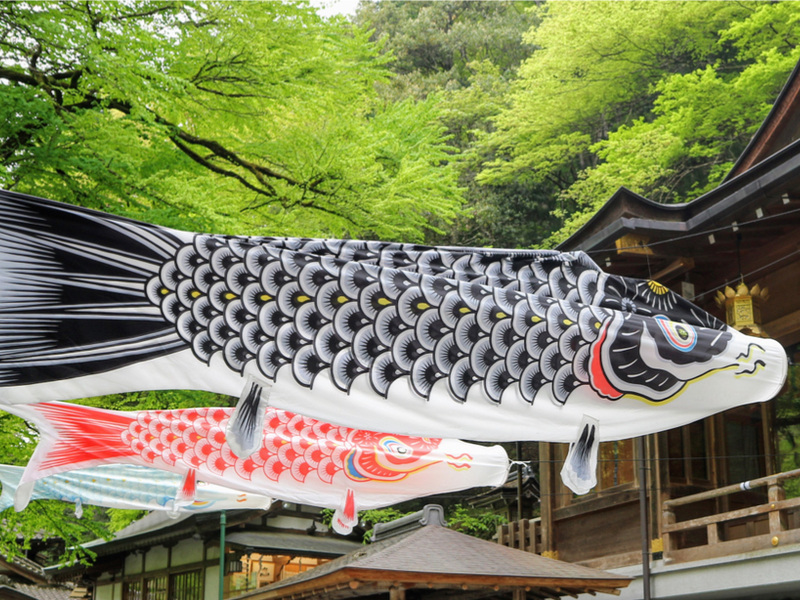Giant carp banners are popping up all over town, blowing in the wind. What’s going on?
It’s the fifth day of the fifth month, otherwise known as Children’s Day. Formerly meant for boys (after all, girls have their own day), the festival has changed its name to include both boys and girls, and in 1948, it was designated a national holiday by the Japanese government. Not only limited to Japan, the festival is also celebrated in most parts of Asia.
Families traditionally fly colorful koinobori banners (or carp-shaped flags, if you prefer) for each child in their house. In Japanese folklore, the carp is a symbol of determination and vigor, overcoming all obstacles to swim upstream. Samurai warrior figurines and samurai kabuto helmets can also be displayed in homes to inspire strength and bravery.
Like any other Japanese festival, it wouldn’t be complete without an assortment of event-specific fare: for Children’s Day, the little ones can feast on kashiwa-mochi (sticky rice cakes wrapped in oak leaves) and chimaki (a sweet rice paste, wrapped in an iris or bamboo leaf). Some families even take baths sprinkled with iris leaves and roots, as the flower is thought to promote good health and ward off evil.
Interestingly, for many people in Japan, the May 5 celebrations still center on boys, due to the fact that girls get their own day two months before on March 3, with hina matsuri.
How do you celebrate Children’s Day? Fancy getting your own koinobori to make things more official or just want to find out more about what these carp streamers are? Take a look at our friends over at JCRAFTS, who offer traditional Saitama-made koinobori in many different sizes and designs as well as teaching more about their origins.









